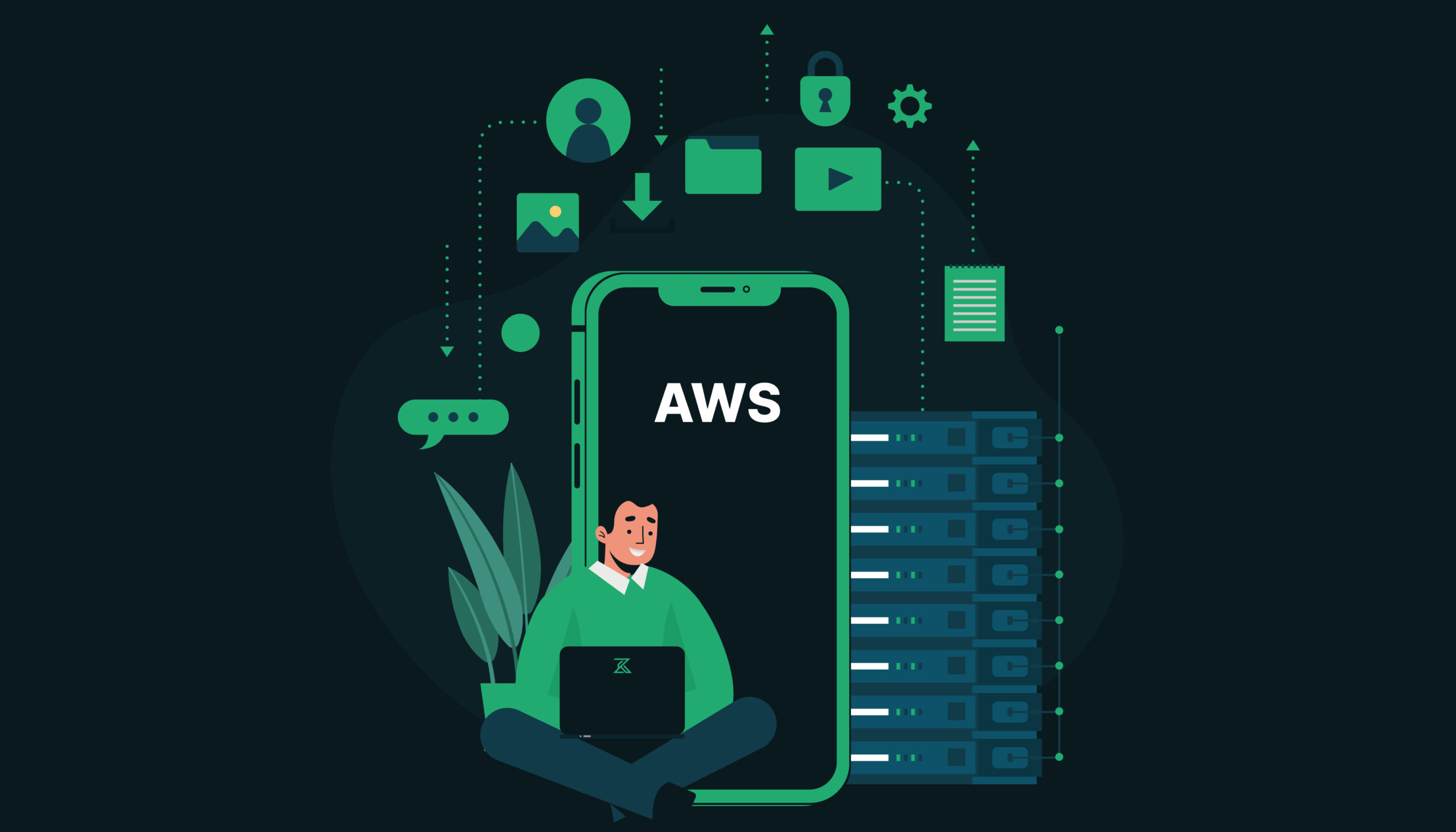Cloud computing is no longer confined to sharing infrastructure to host applications. The concept of mobile application development has also advanced in order to provide better services to consumers. Cloud computing’s increased reliability and scalability aided in its adoption. Before we go inside the AWS mobile app, it’s important to understand what AWS is and why various firms use it to provide an agile development culture.
AWS stands for Amazon Web Services, and it provides highly secure on-demand cloud computing services to consumers, government organizations, and small and large businesses via subscription. These services serve as the foundation for deploying any application on the cloud platform. Furthermore, AWS provides a number of cloud benefits for AWS mobile app development, such as database storage, content delivery, and computational capacity. This enables enterprises to increase the productivity of their development teams by converting the mobile app development process into one that is more flexible and easy to scale.
>>AWS mobile app services might be infrastructure-as-a-service (IaaS), platform-as-a-service (PaaS), or software-as-a-service (SaaS).<<
Let’s get started with a comprehensive explanation of 05 AWS services that will assist you in your next mobile app development project.
1. Amazon Cognito:
AWS Amazon Cognito is a service for synchronizing user states that allows you to create unique identities for your users. It allows developers to incorporate user sign-up, sign-in, and access control centered on web and mobile apps by supporting secure app authentication. It also keeps a user directory where users’ data can be stored.
How does it work?
When you create an AWS account, you must include the Amazon Cognito SDK in your application and write some code. After that, you can initialize the Cognito credentials provider and create a new identity pool using the Amazon Cognito administration portal. It generates authentication tokens and oversees the identity identification and verification procedure. When the user submits the details, it creates a valid token.
2. Amazon DynamoDB:
AWS Amazon DynamoDB is a NoSQL (not only SQL) cloud database service that can store and retrieve enormous amounts of data or traffic on demand. Its database service is exceptionally quick, with consistent latency in the single-digit milliseconds at all levels.
It offers automated segmentation, so scalability is one of its key features. The user who requires product data, volume, or growth can proceed without user intervention. Its dependability and scalability make it an excellent choice for gaming, online, ad tech, mobile, and IoT apps, among other things. It supports a variety of document types and primary value store models.
How does it work?
DynamoDB is compatible with Java, JavaScript, Node.js, PHP, Python, Ruby, and NET programming languages. Before you begin, you can choose your preferred programming language. After creating the database table, you may modify the target usage for auto-scaling.
You can configure the service to handle a variety of database administration duties, such as hardware or software provisioning, software patching, setup, and configuration, running a distributed database cluster, and distributing data across several instances for scalability.
3. S3 from Amazon:
Amazon Simple Storage Service (S3) is a data caching and retrieval cloud object storage service. It may collect data from a variety of sources, including mobile apps, business applications, websites, IoT sensors, and so on.
S3 has been classified into many storage classes that are meant for various applications, such as:
- S3 is a general-purpose storage standard for commonly used databases.
- S3 Standard-Infrequent Access and S3 One Zone-Infrequent Access are used for material that has been kept for a long time but is accessed seldom.
- Amazon Glacier is being used as a long-term archive.
There are several types of data policies that govern the data management process. The user may choose their storage plan and move all critical data without having to change the end application.
How does it work?
Data is saved as objects in “buckets,” which are resources. A bucket may hold a maximum of 5 TB of data for each object. The user may read, write, and remove objects in the bucket using the access control. Controls can be specified for each object individually or for the entire bucket.
User permissions for accessing items and access logs that may be viewed at any time can be adjusted. The customer may choose any AWS bucket area for storage with the least amount of delay and expense, all while adhering to laws.
4. Amazon CloudFront:
Amazon CloudFront is an AWS global content delivery network (CDN) service. It securely transmits movies, data, apps, and APIs to your viewers while maintaining fast transfer speeds and minimal latency.
How does it work?
Static and dynamic files are kept on origin servers and delivered to users via Amazon CloudFront. An API call is used to register the origin server with CloudFront. Following that, it returns a CloudFront.net domain name that will be used to deliver the material.
The content queries are sent to an appropriate edge location, which aids in the retrieval of the file’s local copy. If a local copy cannot be found, a duplicate copy will be obtained from the origin server.
After discussing the various types of AWS Services, we will now concentrate on the major qualities that distinguish one from the other.
5. AWS Lambda:
AWS Lambda simplifies the job of the mobile developer by handling everything themselves. AWS allows you to run code based on events to make provisioning and managing servers easier. You only need to upload the code, and Lambda will handle the rest, including scalability.
The user is not required to participate in server administration. The code is automatically installed, either through other AWS services or directly from any web or mobile app.
How does it work?
AWS Lambda receives the Lambda function code. The function is made up of code and related configuration information, such as the function’s name and resource needs. These routines can execute code automatically in response to certain circumstances.
The user has the option of introducing many copies of the function, making scaling simple and quick. AWS Lambda also implements the code during instructions and automatically balances resources based on demand.
AWS executes your code in a highly accessible computational infrastructure and conducts operations such as server and operating system maintenance, provisioning capacity and automated scaling, code and security patch deployment, and code monitoring and logging.
The Bottom Line:
AWS services for mobile app development provide various advantages over on-site mobile app development. The above description, functionalities, and essential features help us realize that AWS services provide greater assistance for cloud-based app development. It improves the efficiency with which AWS mobile apps are developed and deployed. It is regarded as more trustworthy in mobile app development.
It benefits businesses by allowing them to adapt swiftly to changing business requirements. Furthermore, you may use these AWS services to modernize your mobile development with greater resource optimization.
To get started with all of this, you must first thoroughly comprehend cloud-based services. This is where Zenkoders come into play. Our knowledgeable staff can help you get started with AWS mobile applications, create a cloud-based app development environment, or transfer an existing app to the cloud. Contact us if you want to enhance your business services digitally across the globe.


